Your Sunday nights are about to get a bit quirky, Gothic and Victorian with the arrival of RTÉ One's new series, Dead Still. Here, John Byrne goes on set to talk to the show’s lead, Michael Smiley, and introduces its compelling cast of characters.
I’m sitting in a big posh house up a hill on Dublin’s southside. It’s part of the scenery in a new six-part series on RTÉ One that mashes up enough TV genres to make it one all of its own. It’s called Dead Still and it’s an absolute hoot.
Set in Dublin at the tail-end of the 19th Century, it focuses on the fortunes of Brock Blennerhassett, a pioneering photographer who specialises in memorial portraiture - he creates portrait photography of the recently deceased.
He basically takes family portraits that include lost loved ones. Seriously! It was a thing back then.
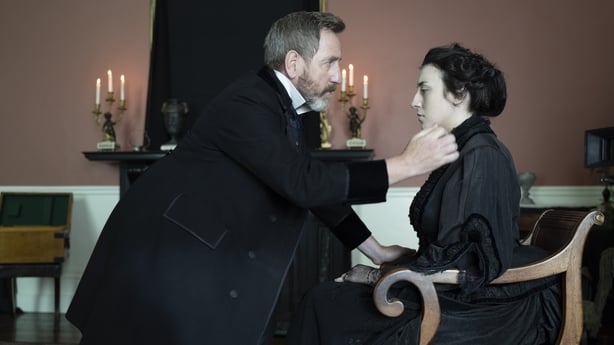
But although photography remains a fairly new phenomenon in the late Victorian era, cameras are becoming cheaper and Dublin is flourishing with photographic studios. Business isn’t looking too good for Mr Blennerhassett.
Into his home comes Nancy, his niece, who leaves her family for Dublin and the dream of acting. And then a local gravedigger, Conall Molloy, approaches him at a funeral. He wants to become his assistant.
Another fan of Blennerhassett’s work is Detective Frederick Regan, who’s on the hunt for a killer and thinks there may be a link to the memorial portraiture game.
When this lot get together, pretty much anything can happen, as Michael Smiley - who plays Brock Blennerhassett - explains, while he takes a break from filming and sits down for a chat in the big house’s drawing-room...
JB: So who’s this Brock fella?
MS: I'm playing a character called Brock Blennerhassett, it’s set in the early days of photographic development, and he's a memorial photographer.
He’s upper class. Anglo. He's become obsessed with this new format called photography, and has devoted his life to it. So he used to be an embalmer before and now he’s got into this.
Is he fun to play, and can you explain the process of getting a character right?
Yeah, He’s great.
Once you get your head around the character, you make decisions as an actor, how you're going to play stuff. And you'll do that in the comfort of your own bedroom.
And then you'll come on set and you start working with directors, DOPs - directors of photography - the other actors and the writers and stuff like that, and it then becomes something else.
I knew I had my ideas on how to play Brock. But I’d never worked with Eileen [Higgins, who plays Brock's niece, Nancy] before, so I didn’t know how that was going to pan out. That’s what makes it exciting as any actor.
Meet the cast: Brock Blennerhasset, played by Michael Smiley
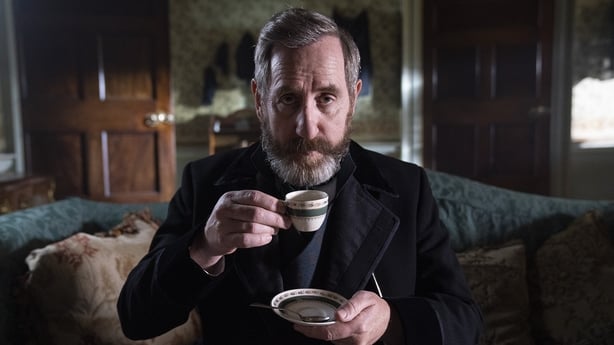
He's Ireland’s foremost memorial photographer. That is to say, a photographer of the recently deceased.
Blennerhasset is a remote, unemotional man with a keen eye for detail and a sharp, mordantly dry wit. In general, he seems to be much better dealing with the dead than the living.
After an accident, he’s forced to take on a new assistant and host his estranged niece which may succeed in bringing both him and his business back to life.
JB: It’s very much a period piece...
MS: It's an era when things are changing.
What really attracted me to this series was, it was unapologetically Irish. It wasn’t tugging its forelock to the UK. It wasn’t pretending to be a drama set in Victorian London.
It was saying: in Dublin, this stuff was going on. This was the environment and this was in this time.
I find that really interesting because what we’re getting is real, it’s written by an Irishman, there are real Irish characters coming in, and of the different stratas of Irish life in the 19th Century, how they interact and how they did it.
I know more about Victorian London than I do about Victorian Dublin. So, for that reason I find it interesting. I hope the viewers will find that interesting too.
Meet the cast: Conall Molloy, played by Kerr Logan

Blennerhasset's loyal and efficient assistant. Formerly a gravedigger, Molloy wants to move up in the world following some recent tragedy in his own life.
A talented artist, Molloy is passionate to utilise photography to document the ever-changing street life of Dublin.
Has a penchant for running his mouth and getting in scrapes but makes up for it with hard work.
JB: It’s a drama - but there’s a lot of humour there too...
MS: There are funny bits in it. And there’s day-to-day interaction between family members and whatever. It’s like, these characters and life’s happening around them, and sometimes life impinges upon them.
And their life can be quite gothic, and the world that they’re in - which is 19th Century Dublin.
is it completely different to anything you've done before?
Yeah. completely different. I've done period drama before and stuff like that. But without giving too much away, it's different from a lot of stuff I've done before.
Meet the cast: Nancy Vickers, played by Eileen O'Higgins
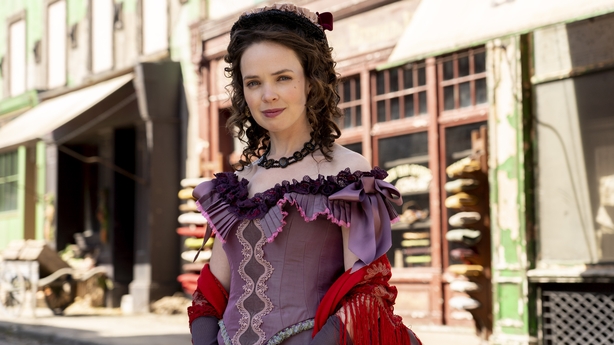
A sheltered, over-maginative young lady, Nancy is Blennerhasset’s young niece who is also helping to run his business.
Despite their immense wealth and privilege, Nancy wants to break away from her oppressive, emotionally abusive family. Moving to Dublin gives her a new lease of life and she has designs on becoming an actress.
She’s quite flighty, excitable and quite a contrast to her elder relations. But at her core is a wit as sharp as her uncle’s and a strong sense of fairness.
JB: How does it compare to working on Luther?
MS: The thing with Luther, for me, was - because it wasn’t six episodes, it was three or four episodes - it was based on the availability of Idris [Elba], really.
There was more continuity, because you were doing bigger days. So you were doing all of episode one or episode two, for example. It was slightly more linear, because the nature of Luther is a small universe.
So it’s all shot around the same place. We would’ve shot a lot of it in East London, for example. It wasn’t massive jumps around the place.
Meet the cast: Detective Frederick Regan, played by Aidan O'Hare
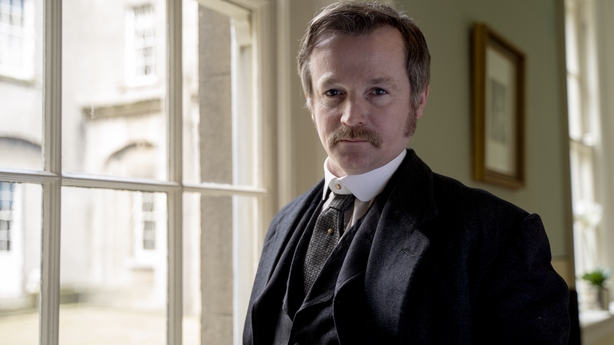
A bullish, overbearingly enthusiastic member of the Dublin Metropolitan Police, Regan recently moved to Dublin from Cork and wants to make a name for himself.
Frequently an unwanted caller on Blennerhasset, he is hugely curious about photographic technology and wants to use it to aid investigation of crime in Dublin Castle.
Regan is both an ally and an antagonist for Blennerhasset and co.
JB: Is the location, Dublin, central to the story?
MS: Yes, it is. Very much so.
I’m from the north, but I live in London, and coming to Dublin... the architecture here is just amazing. There’s no other place within these two islands that looks anything like Dublin.
People talk, for example, about the beauty of Edinburgh - it’s got nothing on some of the architecture that’s in Dublin. And consistently, all over the place.
It’s not just amazing houses, but the terracing, You go on the north side, the south side, there’s these amazing Georgian and Victorian terraces with beautiful doors and things like that. So it lends itself to the universe that we’re shooting.
To shoot this in London, you’d probably only have two or three streets you could shoot it in - here, you’ve got a plethora of choice. So it lends itself to these sort of stories.
Meet the cast: Cecil Carruthers, played by Jimmy Smallhorne
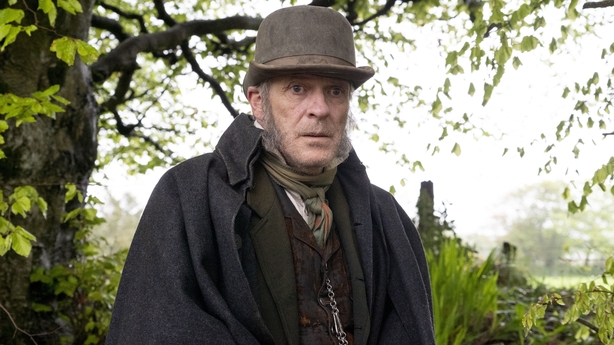
Blennerhasset's gruff, chain-smoking coachman is only interested in doing the bare minimum work.
His curmudgeonly ways and contrary, stubborn manner sit very well with Blennerhasset, and their bickering masks a long held relationship and deep trust between them.
Little is known of his background but he seems to have some dubious side jobs on the go.
JB: Where do you stand on the 'TV is better than film these days’ debate?
MS: I think it's completely flipped. I think television, because there's so... it's multi-platformed, that people aren't watching television like they used to, people watch television, on their own devices.
Like, I’m married with two children and, of an evening, we're having a family night together, I'll be on my laptop, my wife will be on her laptop, the kids will be on their screens, and we're watching four different things. And the TV will be on.
And you’re completely discerning now.
Back when I grew up, there was three channels, and BBC Two was pretty much the Open University - there was pretty much that and University Challenge, but now we've got so much choice.
And you can play with the format of storytelling better with television than you can with film, because you can come back to it again, you can flip it and change it.
But having said that, I really love film. Television is a very different beast.
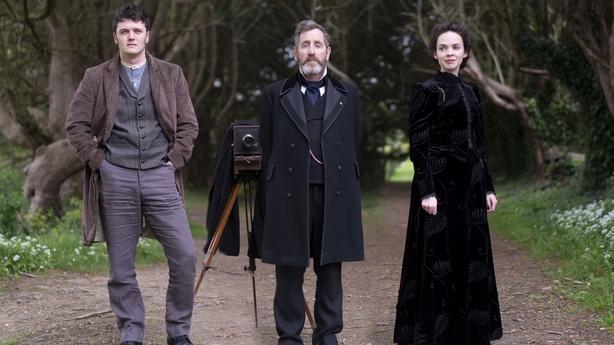
Dead Still, Sundays at 9.30pm on RTÉ One


